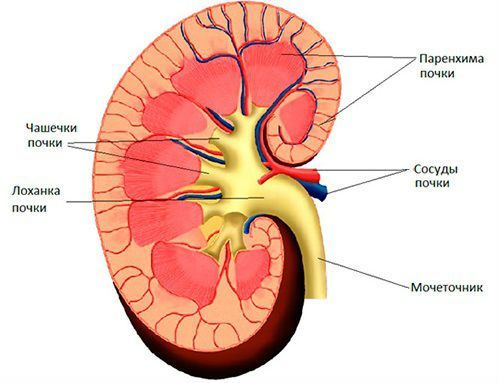The sciatic nerve is one of the largest in the human body. It innervates the muscles of the limb, except for some of the gluteal muscles, flexors of hip and extensors of the knee.
In adults the diameter of the specified nerve reaches 1 cm Nerve fibers formed by the sensitive cells and spinal motoneurons.
When pinching or inflammation of the sciatic nerve, you will immediately understand where it is located.
Features of fetal development
At the beginning of the second month of fetal development in the body of the embryo have been recorded nerve plexus. After some time formed the nerve fibers that grow into the beginnings of the limbs formed later on the nerves. By the end of 8 weeks of embryonic development (when the embryo is 1.5-2 cm) of the sciatic nerve is already in its normal position.
Sciatic nerve: structure
Presented above, the neural tube is a bundle of fibers enclosed in endoneurium (biomembrane with a dense network of capillaries). Perimetry is the next layer of the neural tube.
In this layer are localized blood vessels of larger diameter, which are surrounded by connective tissue, forming a protective shell against mechanical damage.
Outside the neural tube has a dense sheath of connective tissue. Such education is called epineurium (the outer sheath of the sciatic nerve).

The topography of the sciatic nerve
The nerve is formed outside of the spinal canal in the pelvis, passes through greater sciatic hole, is covered by the gluteus Maximus muscle, and then descends on the posterior surface of the thighs, heading to the flexors of the lower leg.
This nerve trunk is of great length and scope of many departments of the lower body of the person.
Long branch of sacral nerve plexus is derived through a special small hole subpiriforme in the pelvis. In order to get on the femoral surface, a nerve trunk passes under the gluteus Maximus.
He goes on, lower and splits into several small branches, ensuring good sensitivity of the thigh and gluteal muscles.
Moving down the neural tube comes to the popliteal fossa, where it is separated in small and tibial branch.
This network of nerve fibers provides the sensitivity located in this area of muscle, joint, and skin of the foot and lower leg.
That’s why at the bottom of the foot there is severe pain when sitting and the damage of the nerve.

Disease sciatic nerve
Pathology of the sciatic nerve is actual problem of modern medicine. It should be noted that this neural tube refers to the mixed type, that is, contains both sensory and motor fibers so the clinic for the defeat of the sciatic nerve manifested various pathological features.
These diseases cause disability, limit activity, cause serious suffering. With the defeat of the sciatic nerve often develops:
- injury to the gluteal muscles that can be observed with bruises, cuts, or tears;
- radicular syndrome (sciatica) develops as a result of infringement or excessive stretching of nerve fibers of the lumbosacral spine;
- metabolic disorders (thyroid disease, diabetes, poisoning of various etiologies) negatively affect the functioning of nerves;
- muscle atrophy;
- neuralgia of the sciatic nerve develops during prolonged stay in a sitting position.
Sciatica (radicular syndrome)
Sciatica the sciatic nerve is dependent to some disease, but only syndrome, which develops in different States.
Therefore, before treatment of lesions of the sciatic nerve need to find out the cause of their appearance and conduct individual diagnostic examinations.

For the diagnosis of pathologies of the sciatic nerve often use x-ray, CT and magnetic resonance imaging.
In cases when a patient for a long time was taking steroid medications, have tumors is advisable to appoint a radioisotope scan of the spine.
Sciatica is easily diagnosed by four points sensitive to palpation. The first point is 4-5 cm below the knee, and the second is localized in the 8-10 cm from the knee joint, the third – from the popliteal fossa on the femur, the fourth is just above the third point.
Neuralgia of the sciatic nerve
The etiology of the disease is associated with damage to the hip, fractures, injuries, loss of intervertebral discs, fatigue of the lower limbs, sedentary lifestyle.
The disease can also develop hypothermia when various internal and infectious diseases (tuberculosis, rheumatic fever, brucellosis, gout, diabetes mellitus).
In men, the disease are recorded than women.
The main symptoms of disease:
- weakness of the lower extremities and numbness;
- feeling a kind of burning sensation in the legs;
- the pain in my legs and back;
- muscle weakness.
Symptoms of neurological damage the sciatic nerve is largely influenced by the location of the pathological process in the nerve fiber.




Hi, Neat post. There is a problem with your website in internet explorer, would test this… IE still is the market leader and a large portion of people will miss your fantastic writing because of this problem.
You must participate in a contest for among the finest blogs on the web. I’ll suggest this site!